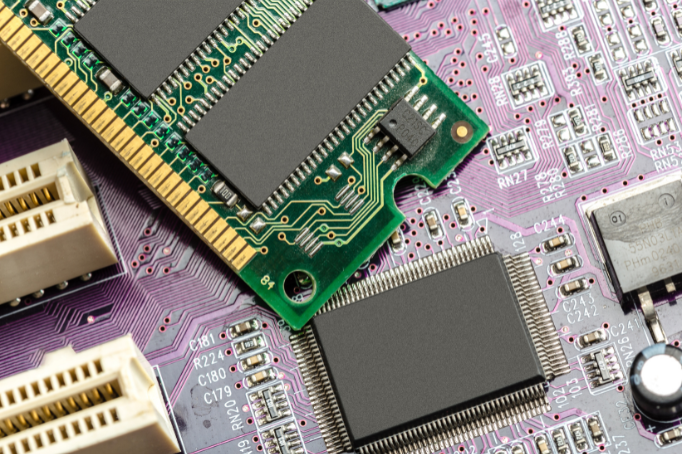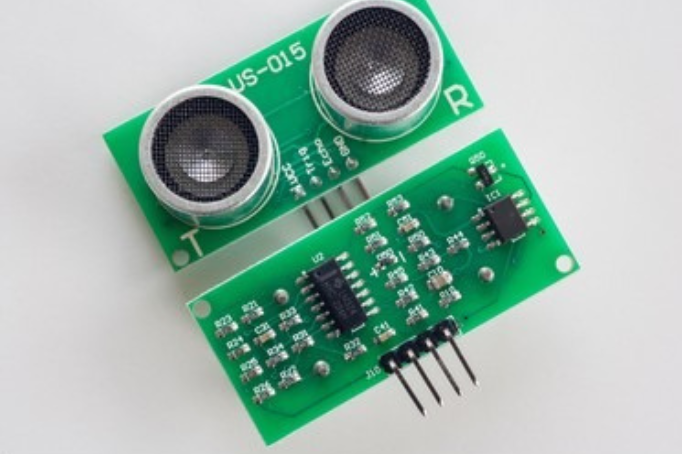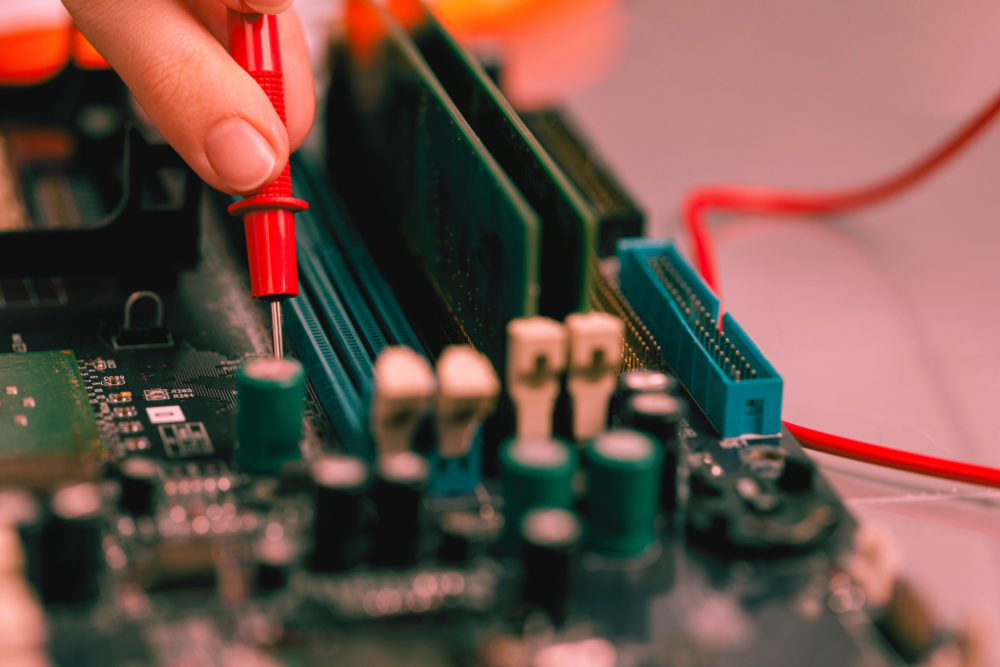Renewable power systems, including solar energy, wind energy, and hydropower, are anticipated to be the answer to clean, sustainable power for the future. Nevertheless, with these possible energy sources come the problems associated with stochastic and stochastic power generation. More precisely, voltage regulator ICs (Integrated Circuits) will appear here as crucial elements able to provide a stable network of renewable energy systems. These little devices are playing a part in tackling some of the major challenges that accompany the move towards utilizing renewable energy sources; they are therefore fundamental to the endeavour towards enhancing efficiency, scalability, and compatibility of renewable energy with conventional systems.
Understanding Voltage Regulator ICs in Renewable Energy
Voltage regulator ICs are devices designed to output a stabilized voltage irrespective of changes in input voltage, the amount of load, or other factors. They are employed virtually in most applications ranging from consumer electronics to automobile applications, although their application in renewable power is important. In contrast, renewable sources of power generation like solar and wind power are quite sensitive to climatic conditions, and hence the amount of electric power that can be generated by these means is quite unpredictable.
In renewable energy systems, voltage regulators play a vital role in maintaining the quality of the energy derived from natural sources and converting them to the level of electricity that is satisfactorily used in our systems. For example, for some of the fluctuations, a device such as a solar panel can produce four times as much electricity in the morning as it could in the evening following a full day of use. Voltage regulator ICs are applied in the stepdown of these fluctuations to provide constant energy to the storage systems and, in some cases, directly to the grid to improve the efficiency and reliability of the renewable power systems.

Types of Voltage Regulators Used in Renewable Energy Systems
In renewable energy systems, two main types of voltage regulators are commonly used: linear regulators and switching regulators.
- Linear Regulators: These regulators regulate a steady output voltage and regulate heat energy in the emptiness. Although practical and reliable for low-power devices, they are relatively inefficient at high-power levels because they can produce considerable amounts of heat.
- Switching Regulators: These are far more efficient in high-power applications, as they could be employed in renewable energy systems. There are two types of switching regulators: those that employ an inductor to convert excess voltage into current or a capacitor, or in some cases both, to minimize the dissipation of energy. The common switching regulators are the buck converter, which decreases the voltage of the power supply; the boost converter, which increases the voltage of the power supply as well; and the buck-boost, which both steps up or down depending on what the renewable energy system needs.
Comparing the linear and switching regulators, the application of each type of regulator depends on the need assessment of the renewable power system. But due to the efficiency, switching regulators have come to be utilized due to the high efficiency in maximum power point utilization in utilities such as wind farms or solar power.
Enhancing Energy Storage Systems
Battery storage is a critical element in renewable electricity technologies because it stores electricity during periods of high generation for use at other times when generation is low. A voltage regulator is central to these systems because its primary function is to guarantee that batteries are charged optimally. This is important because charging or overcharging the batteries at random intervals or not at times recommended can affect the batteries, in effect shortening their lifespan.
For example, in solar-conversion electrical power-ducting systems, one needs to manage the current generated by photovoltaic (PV) cells before they recharge a battery. Voltage regulator ICs regulate the energy fed to the battery to match the battery charging requirements to avoid overcharging and therefore harming the battery. This ensures battery life and system performance, as well as the overall system efficiency of renewable energy systems.
Through enhancing the lifetime of storage systems, voltage regulator ICs prop up one of the key enabling factors in renewable energy: backup power during low energy production intervals, as in the case of night or during cloudy weather conditions.
Boosting Efficiency in Power Conversion
The ability of power conversion is a central ingredient of renewable energy systems because it determines the fraction of energy available in the natural resources that can be harvested for useful purposes. Voltage regulator ICs help increase efficiency because energy loss during conversion is very low. For instance, solar panels produce Direct Current, or DC power, that must be changed to AC or Alternating current, which is the type of current used in most homes and offices. Voltage regulator ICs play the utmost role in the conversion of power from DC to AC without significant loss of power.
What is more, the majority of contemporary voltage regulators can still adjust their operation depending on load demands, thus guaranteeing efficiency and minimizing wastage. More efficient power conversions through these ICs mean that renewable energy systems are affordable and have fewer adverse effects on the environment when operational.
Improving the Reliability of Smart Grids
In recent years, as the utilization of renewable energy sources increases and interacts with the existing power system, the so-called smart grid came into sight. A smart grid is an advanced electrical grid system that uses the application of digital technologies for the control of electricity flow from various sources, such as renewable energy. Where it is particularly relevant is in voltage regulator ICs, which maintain accurate output voltage while sourcing power from the grid and accepting a fluctuating amount of current from renewable sources.
Voltage regulator ICs play a role in load management, energy storage, and demand control, which is an important aspect of smart grids. They can act immediately to changes in demand and supply of energy and can control voltage without having to intervene. This guarantees that consumers enjoy a steady power supply, and the risk of experiencing a power blackout or brownout is minimized as the source of energy transitions to renewables.
It also means that voltage regulators help smart grids manage distributed generation, like rooftop solar panels or small wind turbines.

Advancements in Voltage Regulator Technology for Renewable Applications
Voltage regulator integrated circuits have developed over the recent past as improvement in semiconductor technology takes place as well as realization of the need to adopt efficient energy control systems. New materials like GaN and SiC have enabled high voltage, high temperature, and high-efficiency voltage regulators. These new materials provide better performance than the silicon-based regulators commonly used and are ideal for renewable energy.
For instance, the GaN-based voltage regulators are compact, highly efficient, and have an improved power density compared to the industry standard. This makes them capable of being used, especially in the areas of solar and wind power systems, because of space and efficiency considerations. The availability of these novel materials is poised to increase and thus increase the efficiency and durability of renewable energy technologies towards the progression to cleaner energy.
Further, to create value-added features, the concept of using artificial intelligence (AI) and machine learning algorithms in voltage regulator integrated circuits (ICs) is up and running for smart energy management. They are capable of receiving signals in power generation and usage and adapting to them depending on the current environment or regulation. This flexibility is eminently suitable in renewable energy systems since the weather conditions can change after a short duration.
Reducing Maintenance and Operational Costs
Due to fluctuating natural conditions, one of the fundamental issues faced by renewable energy is the hefty amount required to cover the maintenance and operating expenses to guarantee reliability. Voltage regulator ICs go some way to solving this issue by removing much of the hand tuning that must take place. These ICs regulate the voltage levels and thereby work at their best possible efficiency even if the input conditions change, and thus there will be no frequent repair and maintenance of other devices that may get affected by those conditions.
Furthermore, voltage regulators incorporating monitoring features are capable of offering real-time information on system status, including signs of an impending compromise due to future faults or inefficiencies, and thus form the basis for future remedial work. This type of predictive maintenance is useful in extensive renewable power systems like wind or a solar power farm.
Facilitating the Transition to a Decentralized Energy Model
Energy supply is gradually shifting to different segments, and a single large power plant is not typical for the future power supply system. Voltage regulator ICs are crucial to this model as they help small-scale power generators, including residential photovoltaic systems and micro windmills, to generate clean electrical output that can be easily integrated into the primary power grid system.
RE models include many benefits, such as providing more energy security, experiencing fewer distribution losses, and easily bearing with disruptions. Voltage regulator ICs make this possible by supplying the requisite regulation of the varying power levels from numerous, dispersed sources. They make the source grid comprise elements that optimally contribute to creating a more sustainable and less rigid power network.
Conclusion
While voltage regulator ICs are compact devices, they contribute significantly to the renewable energy market. They are indispensable for renewable energy development and success because these devices enable reliable power output, improved energy conversion efficiency, and effective integration of renewable sources into smart electric grids. With the development of technology, the use of voltage regulator ICs will only get more useful to renewable energy systems.
In the next few years, voltage regulator ICs with enhanced control logic and utilizing modern materials such as GaN and SiC will improve the availability, efficiency, and modularity of renewable energy solutions. They will help humanity gain sustainable development and make renewable energy resources the dominant type of power source worldwide.
Honestly, voltage-regulated ICs have the potential to determine the future of renewable power and contribute to the development of a better sustainable planet. Having said that, they will continue to take the round and will be one of the most progressive firms in availing renewable energy for generations to come.
About The Author
Elena Tang
Hi, I’m Elena Tang, founder of ESPCBA. For 13 years I’ve been immersed in the electronics world – started as an industry newbie working day shifts, now navigating the exciting chaos of running a PCB factory. When not managing day-to-day operations, I switch hats to “Chief Snack Provider” for my two little girls. Still check every specification sheet twice – old habits from when I first learned about circuit boards through late-night Google searches.
